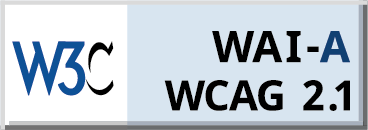Mitigating Interview Bias through Data-Driven Training: How Talview Interview Insights Can Help
In today's job market, interview bias continues to be a significant issue, leading to the underrepresentation of certain groups and hindering diversity and inclusion in the workplace. To combat this problem, it's crucial for hiring managers and interviewers to receive proper training on how to identify and eliminate biases.
In this blog post, we will explore how data-driven training, using insights generated from Talview Interview Insights, can help limit interview bias. We will cover the following topics:
- Understanding the impact of interview bias on the hiring process
- The role of data-driven training in reducing interview bias
- Steps for conducting data-driven training to limit interview bias
- How Talview Interview Insights can provide valuable data on interview bias
By utilizing the data-driven insights generated by Talview Interview Insights, hiring managers and interviewers can make informed decisions, minimize bias, and create a more inclusive and diverse workplace.
Understanding the impact of interview bias on the hiring process
Interview bias refers to any prejudice or preconceived notion that influences the interview process and affects the outcome of the hiring decision. This can happen at any stage of the interview process, from the initial screening to the final decision-making process.
Interview bias can have significant and far-reaching impacts on the hiring process, including:
- Decreased Diversity: Interview bias can result in a lack of diversity in the workplace, as certain groups may be unfairly excluded from job opportunities. This can result in a homogenous work environment and a lack of diversity of thought and ideas.
- Unfair Treatment of Candidates: Bias can also lead to unfair treatment of candidates during the interview process, which can negatively impact their perception of the company and discourage them from seeking employment there in the future.
- Missed Opportunities: Bias can cause hiring managers to miss out on talented and qualified candidates, as they may make assumptions based on factors such as gender, race, or appearance rather than merit.
- Decreased Productivity: A lack of diversity in the workplace can also result in decreased productivity, as teams may lack the different perspectives and ideas that can drive innovation and growth.
It's crucial to understand the impact of interview bias on the hiring process and to take steps to minimize its effects. Data-driven training, using insights generated from Talview Interview Insights, can help hiring managers and interviewers become more aware of their own biases and take steps to eliminate them from the hiring process.
The role of data-driven training in reducing interview bias
Data-driven training is an important tool for reducing interview bias in the hiring process. By using data and insights generated from tools such as Talview Interview Insights, hiring managers and interviewers can become more aware of their own biases and take steps to eliminate them from the hiring process.

The role of data-driven training in reducing interview bias is two-fold:
Awareness:
One of the biggest challenges in reducing interview bias is awareness. Many hiring managers and interviewers may not even realize that they are biased, as biases can be deeply ingrained and unconscious. Data-driven training can help bring these biases to the surface and make them more visible, enabling interviewers to become more aware of their own biases and take steps to eliminate them.
Evidence-based Decision Making:
Data-driven training can also help eliminate interview bias by providing evidence-based decision making. By using data to make informed decisions, interviewers can ensure that candidates are evaluated based on merit, rather than on any biases that may be present. This can help to eliminate any preconceived notions or prejudices that may influence the interview process and ensure that candidates are evaluated fairly and equitably.
Data-driven training can also help to standardize the interview process and ensure that all candidates are evaluated consistently. This can help to eliminate any inconsistencies or irregularities that may be present in the interview process and ensure that candidates are evaluated based on the same criteria.
In addition to providing valuable insights into the interview process, data-driven training can also help to improve the candidate experience. By eliminating biases and ensuring that candidates are evaluated fairly and equitably, data-driven training can help to improve the candidate's perception of the company and encourage them to seek employment there in the future.
Overall, the role of data-driven training in reducing interview bias is crucial. By using data and insights generated from tools such as Talview Interview Insights, hiring managers and interviewers can become more aware of their own biases and take steps to eliminate them from the hiring process, resulting in a more inclusive and diverse workplace and improved candidate experiences.
Steps for conducting data-driven training to limit interview bias
Collecting Data:
The first step in conducting data-driven training is to collect data on the interview process. This can be done using tools such as Talview Interview Insights, which provides valuable insights into the interview process and identifies areas where bias may be present.
Analyzing the Data:
The next step is to analyze the data collected to identify any biases or areas where improvement is needed. This can involve examining data on interview questions, interview ratings, and other metrics related to the interview process.
Providing Feedback:
Based on the analysis, feedback should be provided to hiring managers and interviewers on any biases or areas for improvement. This can include suggestions for eliminating biases, such as using more standardized interview questions, providing training on unconscious bias, and using more objective metrics to evaluate candidates
Implementing Changes:
Once feedback has been provided, it is important to implement changes to eliminate biases and improve the interview process. This may involve revising interview questions, providing additional training on unconscious bias, and using more objective metrics to evaluate candidates.
Monitoring Progress:
The final step is to monitor progress and continue to collect data to ensure that the changes made are effective in reducing interview bias. This can involve regularly reviewing data and metrics related to the interview process to ensure that biases are being eliminated and that the interview process is becoming more inclusive and diverse.
Conducting data-driven training to limit interview bias is an ongoing process that requires regular monitoring and analysis. By using tools such as Talview Interview Insights and following these steps, hiring managers and interviewers can become more aware of their own biases and take steps to eliminate them from the hiring process, resulting in a more inclusive and diverse workplace and improved candidate experiences.
How Talview Interview Insights can provide valuable data on interview bias
Interview bias is a pervasive issue in the hiring process that can result in missed opportunities, decreased diversity, and unfair treatment of candidates. To overcome these challenges, it's essential to utilize tools that can provide valuable data on interview bias and help hiring managers and interviewers make informed decisions. Talview Interview Insights is one such tool that can provide valuable data on interview bias and help mitigate its effects on the hiring process.
Talview Interview Insights is an AI-powered tool that analyzes video interviews to provide valuable insights into the interview process. This tool can help hiring managers and interviewers identify and eliminate biases by providing data-driven insights on interview bias. Some of the key ways in which Talview Interview Insights provides valuable data on interview bias include:
Bias Analysis
Talview Interview Insights uses AI algorithms to analyze video interviews and identify patterns of bias. This includes detecting language patterns, tone of voice, and other indicators that may indicate bias. The tool can provide insights on bias based on factors such as gender, race, and other demographic factors, as well as on specific questions and answers.
Interviewer Behavior
Talview Interview Insights can also provide valuable insights into interviewer behavior and help identify areas where bias may be present. This includes detecting non-verbal cues, such as body language, that may indicate bias. Additionally, the tool can provide data on how interviewers respond to certain answers or questions, which can help identify areas where bias may be present.
Candidates' Perception
Talview Interview Insights can also provide valuable insights into how candidates perceive the interview process. This includes detecting whether candidates feel comfortable and confident during the interview, as well as detecting areas where they may feel uncomfortable or discriminated against. This information can be used to improve the interview process and eliminate any biases that may be present.
Real-time Feedback
Talview Interview Insights provides real-time feedback to interviewers during the interview process, helping them identify and eliminate biases as they occur. This helps to minimize the effects of interview bias and ensure that candidates are treated fairly and equitably.
Data-Driven Insights
Talview Interview Insights provides data-driven insights into the interview process, which can be used to make informed decisions and eliminate bias. This includes data on how candidates respond to questions, how they perceive the interview process, and how they compare to other candidates. This information can be used to make informed decisions and ensure that candidates are evaluated based on merit, rather than on any biases that may be present.
By providing data-driven insights into the interview process, Talview Interview Insights can help hiring managers and interviewers make informed decisions and eliminate interview bias. This can result in a more inclusive and diverse workplace, as well as improved candidate experiences and better hiring outcomes.
Additionally, the use of Talview Interview Insights can help companies meet their diversity and inclusion goals, as the data generated by the tool can be used to track progress and identify areas for improvement. Companies can use this data to measure the effectiveness of their diversity and inclusion initiatives, and to make data-driven decisions to drive progress.







Leave a Reply